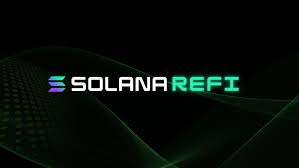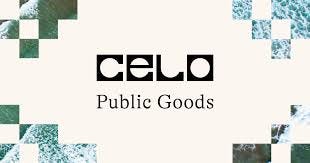Revisiting Regenerative Finance (ReFi): 2025 Edition
An executive edit of the key themes and trends seen across the regenerative finance arena in 2024, exploring why progression didn't match that of DeSci, RWA and DePIN and the outlook for 2025.
Introduction
2024 marked a rallying year for regenerative finance (ReFi), the sector bounced back from a difficult 2023, however was unable to position itself as a burgeoning player amongst the more succesful alt movements like decentralised physical infrastructure (DePIN) and decentralised science (DeSci) which had huge years of growth and mainstream recognition. Let’s revisit some key trends and developments that took place over the year, how they are setting the stage for ReFi’s evolution in 2025 and why we sit at a pivotal junction. With the potential to foster a more equitable economy, elevate the value of environmental services, and redefine humanity’s relationship with the planet still at stake, ReFi needs to move quickly to take on a central role in the fight for a sustainable future.
For those new to ReFi, its principles, and its vision, check out my earlier article: ReFi - A bold new age of financing the environment and please consider subscribing.
2024 Developments
As reported in the ‘State of ReFi Report 2024’ published in Q1 2024 in conjunction with ReFi DAO - Venture funding for Web3 startups, including ReFi projects, had declined significantly moving into 2024. This, due to the bear market conditions, crypto scandals, and competition from AI, with only $1.1 billion raised in Q4 2023 and just 22 ReFi deals reported, mainly in carbon credit infrastructure.
To address this gap, ReFi projects turned to alternative funding mechanisms like quadratic funding (e.g., Gitcoin, distributing $56M since 2019) and retroactive public goods funding (e.g., Optimism, $80M distributed since 2022), enabling projects to sustain and grow by rewarding community support and proven impact instead of relying solely on traditional venture capital.
Solana ReFi Ecosystem Developments
The DeFi powerhouse Solana had a standout year in 2024, solidifying its position as a leader in blockchain innovation while also embracing the growing ReFi ecosystem. Solana now supports 42 ReFi projects, reflecting its inclusion to sustainability-driven finance.
Among these, the integration of Powerledger, a blockchain and energy leader, stands out as a pivotal development. By leveraging Solana's fast, scalable, and cost-efficient blockchain infrastructure, Powerledger has significantly enhanced its energy and environmental commodities platform.
Cubik: Optimizing funding for Solana projects with 10K+ community contributions and $100K from Basket Finance. More
Scrful: Decentralized energy grid with live data and beta rewards system. More
Proto: Map-to-earn app with 850+ users contributing to sustainable mapping. More
Coral Tribe: $800K fund for impact-driven companies, tokenizing RWAs via ReFi Hub. More
EcoToken: Simplifies carbon offsetting with EcoLedger, a cross-chain credit aggregator. More
Sunrise Stake: Carbon-neutral staking for Solana, supporting renewable energy validators. More
WiHi: Decentralized weather intelligence platform, hackathon winner, launching token soon. More
Giveth: Crypto donation platform hosting 3K+ projects, distributing $2.5M. More
Celo Blockchain Ecosystem Developments
Celo Public Goods (CeloPG) Overview
Co-initiated by Monty Merlin and Luuk Weber, CeloPG launched with strong community backing. Highlights include allocating $300K to Web3 climate initiatives, launching the first Retroactive Public Goods Funding round (250K CELO), supporting Giveth’s environment-focused funding, and debuting Real World Builders and Regen Coordination during GG21.
Emerging Trends in 2024
In 2024, the spotlight shifted beyond ReFi communities to encompass three mainstay sectors: Real-World Assets (RWA), Decentralized Physical Infrastructure Networks (DePIN), and Decentralized Science (DeSci). These sectors demonstrated significant growth and cemented their place as key players in the Web3 ecosystem leaving ReFi, overshadowed.
Real-World Assets (RWA): Tokenization saw remarkable progress, with projections suggesting a 50-fold market expansion by 2030.
DePIN: This sector experienced a 400% surge, driven by decentralized networks incentivizing contributions like bandwidth and energy.
DeSci: Emerging as a game-changer, DeSci gained traction through platforms like ResearchHub, funded by industry leaders such as Brian Armstrong (Coinbase CEO), to foster open scientific collaboration.
Each of these sectors shares significant overlap with ReFi. RWA models tokenize renewable energy assets, creating pathways for decentralized ownership and investment. DeSci platforms drive innovation in clean energy solutions and soil technology, advancing critical sustainability goals. Meanwhile, DePIN leverages token incentives to encourage sustainable behaviors and support decentralized energy systems.
Yet, a critical question persists for the ReFi community: why has venture capital investment in ReFi lagged, even during a historic bull market where overlapping sectors like DePIN, RWA, and DeSci have flourished? This disparity highlights the need for the sector to reexamine its value proposition and refine its positioning within the broader Web3 ecosystem. Addressing these challenges is essential for unlocking ReFi’s full potential and achieving meaningful scalability.
Outlook for 2025
ReFi is at a pivotal crossroads. Sectors like DePIN, RWA, and DeSci have thrived by unlocking scalable tokenization models with clear, immediate real-world utility. These developments have attracted venture capital (VC) and mainstream investment, driving both the scalability of their business models and fostering underlying innovation.
This progress should encourage the ReFi coalition: there is a growing market signal that real-world implementation of Web3 technology and decentralized ethos into these systems is the path forward. As a movement, we have begun looking outward beyond our internal markets. To scale its impact, ReFi must evolve its funding mechanisms and diversify its revenue models. But how? Can we replicate the growth and scalability demonstrated by DePIN, RWA, and DeSci?
For ReFi adoption and scalability to materialize, the solution likely lies along a more uncertain and extended pathway beyond reliance on VC facilitation—though VC funding will still play a role. In his article for CarbonCopy News, Kent Babin emphatically introduces the “ReFi Funding Trilemma,” which captures the sector’s current reliance on three funding avenues: grants, token sales, and venture capital (VC). Each comes with trade-offs among accessibility, funding capacity, and the push for commercialization—something he argues can be a zero-sum game with impact.
Babin proposes stronger bridges between ReFi projects and development finance institutions, which have the capital to support impactful initiatives without demanding commercial returns. Such an approach could reduce over-reliance on VCs and grants, fostering a more sustainable funding ecosystem. By learning from DePIN, RWA, and DeSci, ReFi can integrate development finance and implement robust evaluation systems to attract larger, non-commercialized funding sources.
In addition, the ReFi sector would benefit from identifying financial allies outside of Web3. Climate tech and impact tech VCs form a thriving ecosystem beyond Web3, managing tens of billions of dollars. While global VC investments in climate technology dipped to around $30 billion in 2024—down 14% from $35 billion in 2023, and notably lower than the $48 billion peak in 2021—the sector showed more resilience than broader VC markets. Addressing key technical mechanisms that currently present barriers for offchain capital to access on chain projects are a key step to solve in this pattern.
We should also look to governments that value socioeconomic and environmental enrichment for their nations. Notably, at the Blockchain for Good Alliance event in November, government officials joined panels to discuss the critical junction facing our sector. As ReFi moves toward real-world applications and tangible benefits of Web3 technology, it must continue engaging world leaders and UN initiatives. Moving away from the lingering shadows of financial scams and meme coins is vital for broader uptake of ReFi solutions - not something I expect to happen on the same scale as AI since the recent fiasco of the DJT rug pull
Echoing Kent Babin’s sentiments: this transition is easier said than done. Yet, as the adage goes, “Dare to dream, or be doomed to unfulfilled promise.”
Conclusion: A Call to Action
Reflecting on the future of ReFi, a pressing question emerges: can it truly scale to meet global challenges? Early indications are promising, but success will depend on collective effort among governments, local communities, development finance institutions, impact-focused VCs, and innovative technology companies. By forging new partnerships and diversifying funding avenues, ReFi can transcend traditional silos and create solutions with real, measurable impact.
For those reading this, consider ways you can engage with or support ReFi initiatives—whether through investment, advocacy, policy, or community-building. Together, we can seize this pivotal moment and ensure that ReFi scales responsibly, inclusively, and sustainably to address the world’s most urgent challenges.




